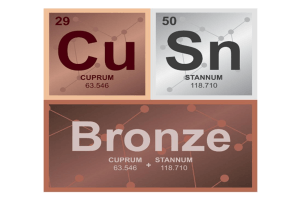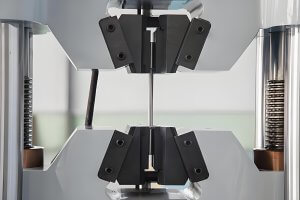Chapter 1: Unveiling Stainless Steel Pipe Essentials
1.1 What Makes Stainless Steel Pipe Exceptional
Having spent years specifying materials for industrial systems, I’ve come to rely on stainless steel pipe for its unmatched reliability. It’s a hollow, cylindrical tube crafted from an iron-based alloy containing at least 10.5% chromium, which forms a self-repairing oxide layer that resists corrosion even in aggressive environments. This durability makes stainless steel pipes indispensable in sectors like chemical processing, food production, and water treatment, where failure isn’t an option. Their standout properties include exceptional corrosion resistance, eliminating the need for costly coatings, which I’ve seen save projects thousands in maintenance. Their strength, often enhanced through CNC machining for precise tolerances, handles extreme pressures and temperatures, ideal for high-stakes applications. The hygienic, non-porous surface prevents bacterial growth, a critical factor in pharmaceutical plants I’ve worked on, where cleanliness is paramount. Plus, their sleek, modern aesthetic shines in architectural designs, from skyscraper facades to custom furniture, blending functionality with visual appeal.
1.2 Why Stainless Steel Outshines Other Materials
In my career, I’ve compared countless materials for piping systems, and stainless steel pipes consistently come out on top. Carbon steel, while strong, relies on coatings that I’ve seen peel in humid coastal projects, leading to rust and costly repairs. Plastic pipes like PPR falter under high temperatures or physical stress, as I witnessed in a failed residential plumbing system. Aluminum pipes are lightweight but lack the robustness for heavy-duty industrial use, and copper, though corrosion-resistant, can’t match stainless steel’s strength or longevity. Through lifecycle cost analyses, I’ve found that stainless steel tubing’s higher initial cost is offset by decades of minimal maintenance, making it a strategic investment for long-term projects.
Table 1: Material Comparison for Piping Solutions
Alt Text: Table comparing stainless steel pipe with carbon steel, plastic, aluminum, and copper for strength, corrosion resistance, and industrial applications.
| Material | Strength | Corrosion Resistance | Temp/Pressure Rating | Initial Cost | Lifecycle Cost | Key Applications |
| Stainless Steel | High | Outstanding | High | High | Low | Chemical, Food, Pharma, Construction |
| Carbon Steel | High | Coating-Dependent | High | Low | High | General Industry, Fire Systems |
| Plastic (PPR) | Low | Good (Selective) | Low | Low | Medium | Residential Plumbing, Low-Pressure Fluids |
| Aluminum | Medium | Good | Medium | Medium | Low | Pneumatic Systems, Lightweight Uses |
| Copper | Medium | Excellent | Medium | High | Low | Medical Gas, Refrigeration |
Chapter 2: Crafting Stainless Steel Pipes: Seamless vs. Welded
2.1 Seamless Pipes: Precision Through CNC Machining
Visiting a seamless pipe manufacturing facility was a career highlight—the process is a marvel of engineering. It starts with a solid steel billet, heated to extreme temperatures, then pierced and rolled into a hollow tube, often using CNC machining to achieve precise dimensions and smooth finishes. The absence of a weld seam ensures uniform strength, making seamless stainless steel pipes my choice for high-pressure systems like oil refineries or nuclear plants. Their reliability under stress is unmatched, but the complex production process increases costs and limits size options, a tradeoff I’ve navigated in budget-constrained projects.
2.2 Welded Pipes: Efficiency Meets Flexibility
Welded stainless steel pipes offer a practical alternative, formed by rolling steel plates or strips into tubes and welding the seam using techniques like Electric Resistance Welding (ERW) or Longitudinal Submerged Arc Welding (LSAW). I’ve overseen projects where CNC machining ensured precise seam preparation, resulting in welds nearly as strong as the base material. Welded pipes are cost-effective and versatile, available in a wide range of diameters and lengths, making them ideal for water transport or structural frameworks. Advances in welding technology have minimized seam weaknesses, boosting my confidence in their use for medium-pressure systems.
2.3 Choosing the Right Pipe for the Job
Selecting between seamless and welded pipes is a critical decision I’ve faced repeatedly. Seamless stainless steel pipes are non-negotiable for high-risk applications like gas pipelines, where a single failure could be catastrophic. Welded pipes, however, shine in cost-sensitive projects like municipal water systems, where their flexibility and affordability outweigh minor seam concerns. Table 2 guides this choice, balancing performance and budget.
Table 2: Seamless vs. Welded Pipe Comparison
Alt Text: Table comparing seamless and welded stainless steel pipes by manufacturing, strength, cost, and applications.
| Feature | Seamless Pipe | Welded Pipe |
| Process | Billet piercing, rolling, CNC machining | Rolled and welded (ERW, LSAW) |
| Strength | Uniform, high pressure resistance | Good, weld seam slightly weaker |
| Corrosion Resistance | Excellent | Good, weld areas need monitoring |
| Cost | Higher | Lower, ideal for large diameters |
| Applications | Oil, Gas, Power Plants | Water Transport, Construction |
Chapter 3: Decoding Stainless Steel Pipe Grades
3.1 The Alloy Families
Stainless steel pipes span a spectrum of alloy families, each tailored to specific challenges. Austenitic grades (300 series) are my go-to for their weldability and corrosion resistance, perfect for food processing plants I’ve designed. Ferritic grades, being magnetic and cost-effective, suit less corrosive environments like automotive exhausts. Martensitic grades offer high hardness for specialized applications, while duplex stainless steel pipes, blending austenite and ferrite, deliver exceptional strength and corrosion resistance for offshore projects. Precipitation-hardening grades push boundaries with ultra-high strength, a feature I’ve explored for aerospace components.
3.2 Global Standards for Consistency
Navigating international standards like ASTM A312 has been crucial in my global projects, ensuring stainless steel pipes perform consistently regardless of origin. These standards define chemical composition and testing protocols, creating a universal language for engineers. Grade comparison tables, like Table 3, have saved me hours in sourcing compatible materials across supply chains.
Table 3: Stainless Steel Grade Standards
Alt Text: Table comparing stainless steel pipe grades across DIN, EN, and ASTM standards for industrial applications.
| DIN | EN | ASTM | Application |
| 1.4301 | X5CrNi18-10 | TP304 | General Use, Food Processing |
| 1.4401 | X5CrNiMo17-12-2 | TP316 | Chloride-Rich Environments |
| 1.4404 | X2CrNiMo17-13-2 | TP316L | Welded Piping Systems |
Chapter 4: Key Grades in Action
4.1 304 vs. 316: A Personal Perspective
Early in my career, I specified 304 stainless steel pipes for a dairy plant, drawn to their cost-effectiveness and versatility. Later, a coastal chemical facility demanded 316 pipes, where molybdenum (2-3%) prevented chloride corrosion—a lesson learned after seeing 304 fail in similar conditions. The slight strength advantage of 316, combined with its “marine-grade” reputation, makes it my choice for harsh environments, though 304 remains ideal for less demanding settings.
4.2 Low-Carbon Grades for Welding
Welding stainless steel pipes taught me the importance of low-carbon “L” grades like 304L and 316L. High carbon content can cause sensitization, where chromium binds with carbon, weakening corrosion resistance near welds. I once saw a pharmaceutical system fail due to this, but switching to 316L ensured robust welds, saving the project from costly rework.
4.3 Duplex: The Heavy-Duty Champion
Duplex stainless steel pipes were a game-changer in a desalination project I managed. Their near-double yield strength allowed thinner walls, reducing material costs while withstanding salty, corrosive conditions. Their resistance to chloride stress corrosion cracking made them indispensable, a choice I’d recommend for any extreme environment.
Table 4: Duplex Stainless Steel Properties
Alt Text: Table of duplex stainless steel pipe grades, composition, and industrial applications.
| Grade (UNS) | Cr (%) | Ni (%) | Mo (%) | Yield Strength (MPa) | Applications |
| 2205 (S32205) | 22-23 | 4.5-6.5 | 3-3.5 | 450 | Oil & Gas, Chemical |
| 2507 (S32750) | 24-26 | 6-8 | 3-5 | 550 | Desalination, Subsea |
Chapter 5: Practical Engineering Insights
5.1 Selecting the Right Pipe
Choosing stainless steel pipes starts with understanding the environment—temperature, pressure, and media. For sanitary systems, I insist on polished surfaces, often achieved through CNC machining for precision. Verifying ASTM compliance and requesting Material Test Reports (MTRs) ensures quality, a practice I’ve honed over years of supplier negotiations.
5.2 Installation Techniques
I’ve embraced press-fit and grooved couplings for their speed in flame-restricted sites, but TIG welding remains my preference for high-pressure stainless steel piping systems. Proper argon purging, both front and back, prevents oxidation, a technique I perfected after early weld imperfections.
5.3 Maintenance for Longevity
Maintaining stainless steel pipes is straightforward but critical. I’ve seen systems fail from chloride-based cleaners damaging the passive layer. Using mild detergents and regular inspections, followed by chemical passivation, extends pipe life significantly, as I learned in a water treatment facility overhaul.
Chapter 6: Real-World Applications
6.1 Oil and Gas: Built for Extremes
In a recent offshore platform project, I specified duplex stainless steel pipes (UNS S32205) for subsea pipelines. Their resistance to chloride corrosion ensured a 25-year lifespan, a decision validated by supplier insights from want.net, a platform I trust for sourcing high-quality materials.
6.2 Food and Pharma: Prioritizing Purity
For a pharmaceutical plant, I chose electropolished 316L stainless steel pipes to prevent microbial adhesion. Orbital welding, enhanced by CNC machining, ensured crevice-free welds, avoiding contamination—a critical factor after a competitor’s system failed due to poor weld quality.
6.3 Infrastructure: Versatility in Action
Stainless steel pipes excel in HVAC and water treatment, resisting corrosion from moisture and chemicals. In an urban wastewater project, duplex grades handled high-salinity water, delivering durability I’ve come to expect from stainless steel tubing.
Chapter 7: The Future of Stainless Steel Pipes
7.1 Sustainability in Focus
The shift to Electric Arc Furnaces and hydrogen-based reduction aligns with my passion for sustainable engineering. Stainless steel pipes, being 100% recyclable, embody the circular economy. I’ve seen companies on want.net lead with low-carbon footprint products, setting a new industry standard.
7.2 Innovation on the Horizon
AI-driven CNC machining is transforming pipe production, ensuring precision and reducing waste. Emerging alloys and 3D printing are expanding stainless steel pipe applications into aerospace and extreme environments, a trend I’m excited to explore in future projects.
Conclusion
From my first project to today, stainless steel pipes have been the backbone of my engineering solutions, offering unmatched durability and versatility. Platforms like want.net connect me with top suppliers, ensuring access to quality materials. Embrace stainless steel pipes for your next project—contact a supplier today!
FAQ:
1. Why is the yield strength of steel a critical factor in CNC machining?
The yield strength of steel determines how much stress a material can endure before permanent deformation, directly affecting part reliability and machining difficulty. In CNC machining, higher yield strength means tougher cutting conditions, requiring advanced tools and strategies. I’ve seen projects fail when yield strength was overlooked, leading to deformed parts under load.
2. How does the yield strength of steel impact CNC machining costs?
Steels with high yield strength demand robust CNC machining setups, like high-power spindles and durable tools, which increase tool wear and cycle times. For instance, machining 4340 steel (470 MPa) can raise costs by 25% compared to A36 (250 MPa) due to frequent tool replacements. Careful planning mitigates these expenses.
3. What are the biggest challenges when machining steels with high yield strength?
High yield strength of steel increases cutting forces, causing tool deflection, chatter, and heat buildup, which can ruin precision and surface finish. In my experience, machining D2 tool steel was a nightmare until we switched to ceramic tools and high-pressure coolant to control these issues.
4. How can I improve CNC machining efficiency for high-yield-strength steels?
Optimize by using carbide or CBN tools with coatings, high-pressure coolant (>1,000 psi), and adaptive toolpaths like trochoidal milling. I’ve cut machining times by 30% on 4140 steel by combining these in CNC machining, ensuring precision without breaking the bank.
5. Which steel grades are best suited for CNC machining based on yield strength?
- A36 Steel (~250 MPa): Easy to machine, great for brackets and frames.
- 4140 Alloy Steel (~415 MPa): Heat-treatable, ideal for shafts and gears.
- 304 Stainless Steel (~241 MPa): Tricky due to work hardening, used in medical parts.
- D2 Tool Steel (~420 MPa): Tough to machine, perfect for dies.
The yield strength of steel guides the choice based on application and machinability.
6. How does heat treatment affect the yield strength of steel in CNC machining?
Annealing lowers the yield strength of steel for easier CNC machining, while quenching and tempering boost it for final use. I once machined 4340 gears in their soft state, then heat-treated them to 900 MPa, achieving both machinability and strength.
7. Why is 304 stainless steel hard to machine despite its moderate yield strength?
Despite a yield strength of steel around 241 MPa, 304 stainless hardens during CNC machining, increasing tool wear. Its low thermal conductivity traps heat, so I always use sharp tools and aggressive cooling to maintain control and quality.
8. How do advanced toolpaths help with high-yield-strength steels?
Toolpaths like trochoidal milling reduce tool stress by using light, circular cuts, ideal for high yield strength of steel. In my shop, these paths have doubled tool life on hardened steels, improving efficiency and finish in CNC machining.
Reference:
https://wuu.wikipedia.org/wiki/%E4%B8%8D%E9%94%88%E9%92%A2
https://www.engineeringtoolbox.com/ansi-stainless-steel-pipes-d_247.html
https://www.smm.cn/mpdb/1705462054902_baike_51723
https://zh.wikipedia.org/w/index.php?title=%E4%B8%8D%E9%8F%BD%E9%8B%BC&oldformat=true&variant=zh-cn
Other Articles You Might Enjoy
- Precision CNC Machining of Stainless Steel: Innovations and Best Practices in Aerospace Machining
Introduction: Precision CNC Machining and the Use of Stainless Steel Precision Computer Numerical Control (CNC) machining, a vital technology within the manufacturing industry, uses pre-programmed software to guide machinery towards…
- Comprehensive Guide to CNC Machining: Carbon Steel vs Stainless Steel
Choosing the right material for CNC machining is a crucial decision for any manufacturer or engineer. Two of the most commonly used materials in various industries are carbon steel and…
- Types of Stainless Steel and Stainless Steel Grades
Stainless steel, renowned for its corrosion resistance, is a vital material in various industries, from construction to culinary tools. This article delves into the types of stainless steel and their…
- What Material Properties Need to Be Considered When CNC Machining Stainless Steel Flanges?
The CNC machining of stainless steel flanges requires a profound understanding of the material's properties to ensure high-quality, precision outcomes. This article delves into the critical material properties that impact…
- Fast CNC Machining Services for Stainless Steel Prototyping
CNC Machining and Stainless Steel in Prototyping Computer Numerical Control (CNC) machining is a critical process in the manufacturing sector, particularly for prototyping projects. It's an automated method that uses…






